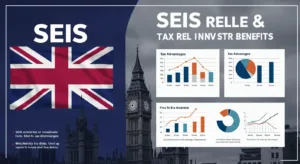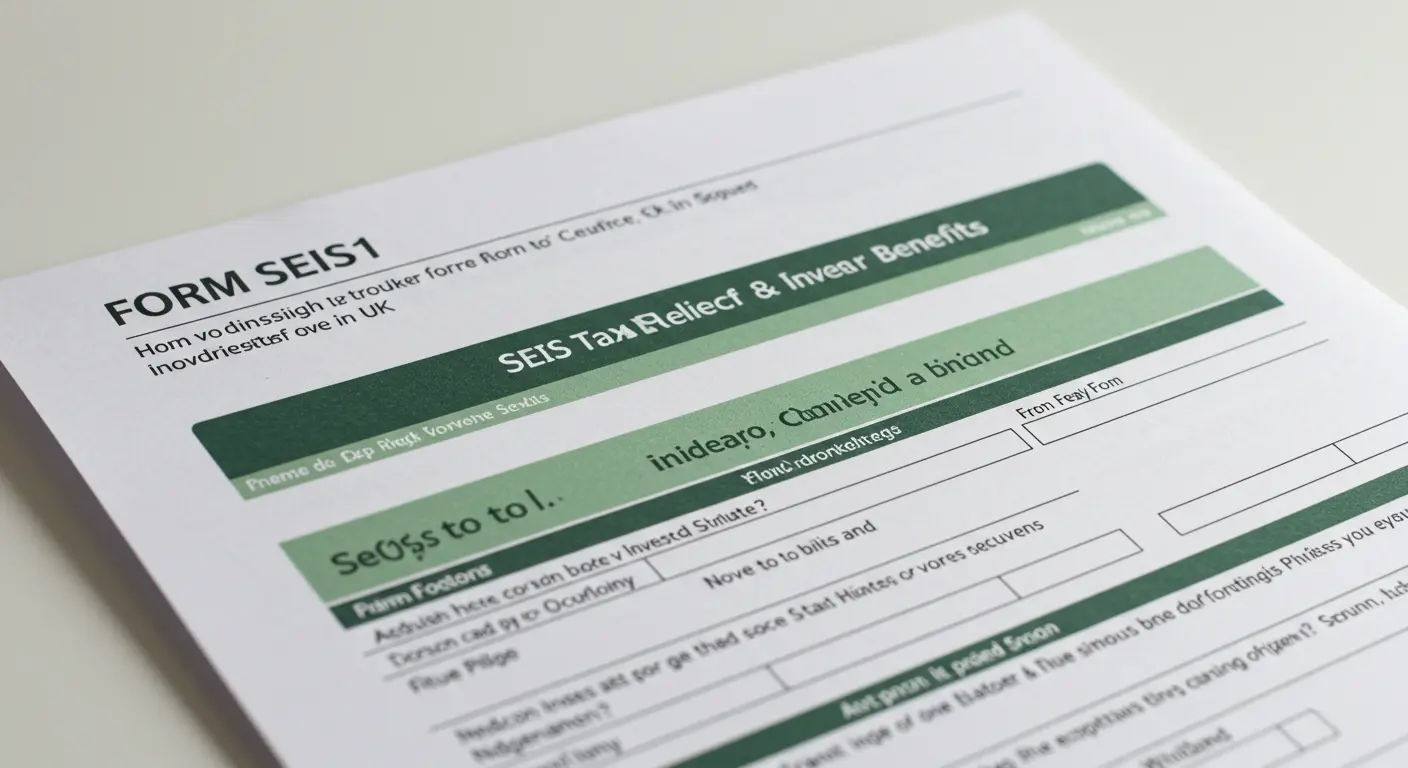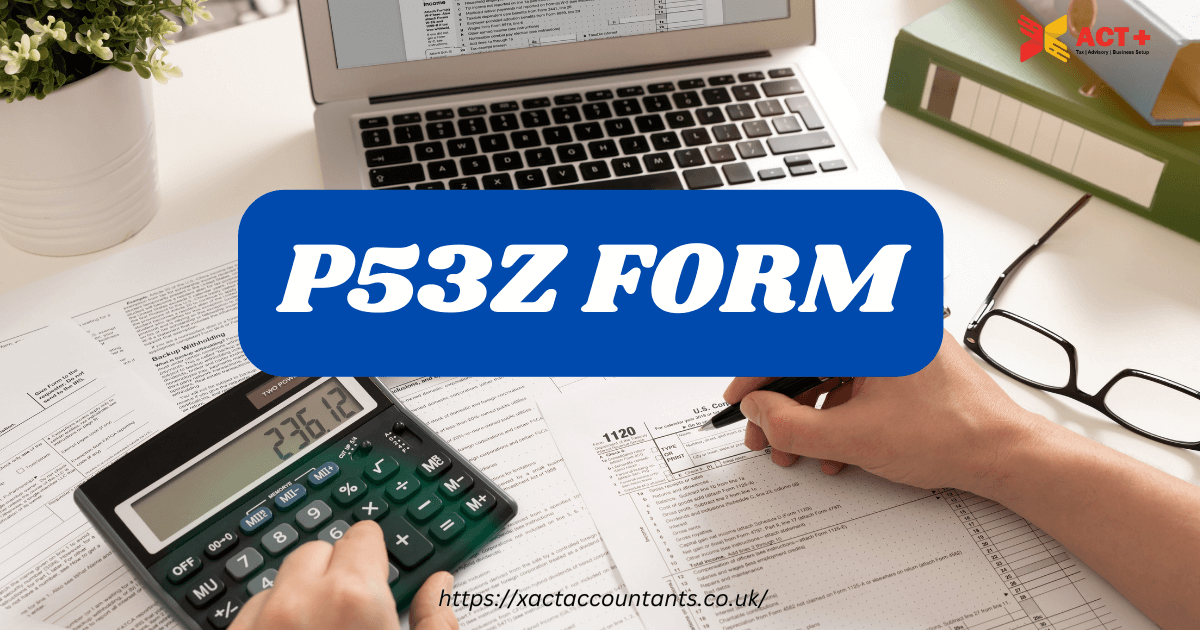What is Form SEIS1?
To receive tax relief under the Seed Enterprise Investment Scheme (SEIS), startups must submit Form SEIS1 to HMRC. This program makes investing in startups more alluring by offering tax advantages to investors who finance early-stage companies.
A company’s eligibility for SEIS tax relief and its qualifying use of the funds are attested by Form SEIS1. Investors are unable to take advantage of the scheme’s 50% income tax relief and Capital Gains Tax (CGT) exemption without this form. Before investors receive tax benefits, it guarantees that companies adhere to SEIS regulations.
How Does the SEIS1 Form Work for Startups?
A vital document for startups looking to receive tax relief under the UK’s Seed Enterprise Investment Scheme (SEIS) is the SEIS1 form. A business must provide HMRC with the SEIS1 form after issuing SEIS-eligible shares to verify that the investment satisfies SEIS requirements. This covers requirements like operating in an authorized sector, employing fewer than 25 people, and obtaining no more than £250,000 in SEIS funding. Only after trading for at least four months or using at least 70% of their investment can startups apply for SEIS1. Investors can use SEIS3 certificates, which HMRC will provide if they are approved, to claim tax benefits like 50% income tax relief and profit exemption from capital gains tax.
To draw in investors, the form SEIS1 process is essential because it ensures tax advantages that reduce investment risks. Before applying, startups should confirm that they meet all SEIS eligibility requirements because mistakes or non-compliance could result in the application being rejected by HMRC. For approval to proceed smoothly, accurate record-keeping is necessary, including information about share issuance and business expenses. Startups must give their investors SEIS3 certificates after HMRC gives its approval so they can claim tax breaks. Because of this, SEIS is a desirable funding choice for startups trying to raise capital and provides investors with significant incentives.
What Information is Required in a SEIS Compliance Statement?
To verify that a business qualifies for SEIS, a SEIS (Seed Enterprise Investment Scheme) Compliance Statement needs essential information. The company’s name, Unique Taxpayer Reference (UTR), incorporation date, and specifics of its business operations must all be included in the statement, which must be filed using Form SEIS1. In addition to confirming that the business satisfies the operational and financial requirements, such as having fewer than 25 employees and gross assets under £200,000 at the time of share issuance, it should describe how the business operates following SEIS regulations.
The statement must also include information about shares issued, investments received, and fund utilization. The business must attest that it has engaged in trading for a minimum of four months or that it has used at least 70% of SEIS funds for legitimate business efforts. Along with supporting documentation like the most recent business plan, financial projections, and shareholder information, it must also contain declarations guaranteeing adherence to HMRC regulations.
How Can Investors Benefit from SEIS Tax Relief?
Investors gain several advantages from SEIS tax relief, making it one of the most attractive investment schemes in the UK. The main advantages consist of:
- 50% Income Tax Relief: Investors are eligible to receive a tax deduction for half of their investment.
- Profits from SEIS shares are exempt from capital gains tax (CGT).
- Loss Relief: Investors may deduct their losses from other taxable income if the startup fails.
The SEIS1 form provides greater tax relief percentages than the EIS3 form. EIS investors only receive 30% tax relief, whereas SEIS investors receive a 50% deduction. People who want to invest in early-stage companies will find SEIS more attractive as a result.
What is the Difference Between SEIS1 and EIS3 Form?
The SEIS1 and EIS3 forms have distinct functions in venture capital schemes in the United Kingdom. A company that has successfully applied for Seed Enterprise Investment Scheme (SEIS) compliance is granted an SEIS1 by HMRC. By certifying that the investment satisfies SEIS eligibility requirements, this form enables the business to provide SEIS3 certificates to its investors. With greater tax breaks to entice investors, SEIS targets very early-stage companies.
Conversely, investors who have made contributions to a business through the Enterprise Investment Scheme (EIS) are given access to EIS3. A company can issue EIS3 forms, which allow investors to claim tax relief, after obtaining HMRC’s EIS1 approval. Targeting more established startups, EIS provides marginally less tax relief than SEIS while encouraging larger investments.
How to Download and Submit the SEIS1 Form PDF?
The SEIS1 form PDF is available for businesses to download from the HMRC website. Accurately filling out the form and sending it in with supporting documentation, such as:
- A SEIS compliance statement attesting to the fulfillment of investment requirements is required.
- Information about the company, such as its trading history and registration number.
- Investor information, guaranteeing SEIS tax relief eligibility.
The filled-out SEIS1 form PDF must be submitted electronically via HMRC’s web portal or by postal mail. Following submission, the application is examined by HMRC, which, if accepted, issues a SEIS compliance certificate. Investors can claim SEIS tax relief with this certificate.
What Are the Common Mistakes to Avoid When Filing SEIS1?
When filling out the SEIS1 form, startups frequently make mistakes that cause delays or rejections. Typical errors include the following:

- submitting before 70% of SEIS funds being spent: Before applying, businesses must have spent at least 70% of the money they had raised.
- Inaccurate investor information Rejections may result from any discrepancy in investor information.
- Noncompliance with the SEIS application checklist: Processing may be delayed if missing information is not checked.
Businesses should verify compliance and double-check all information before submitting to avoid these problems.
Conclusion
For startups looking for tax relief under the Seed Enterprise Investment Scheme (SEIS), Form SEIS1 is essential. Before investors claim benefits like 50% income tax relief and CGT exemption, it guarantees compliance. The proper procedure must be followed by businesses, which includes avoiding common filing errors, downloading the SEIS1 form PDF, and submitting a SEIS compliance statement.
For early-stage investments, SEIS is a preferred scheme over the EIS3 form because investors also greatly benefit from the tax relief provided by SEIS. Entrepreneurs and investors can optimize their financial benefits by ensuring accuracy and fulfilling all SEIS requirements.
















